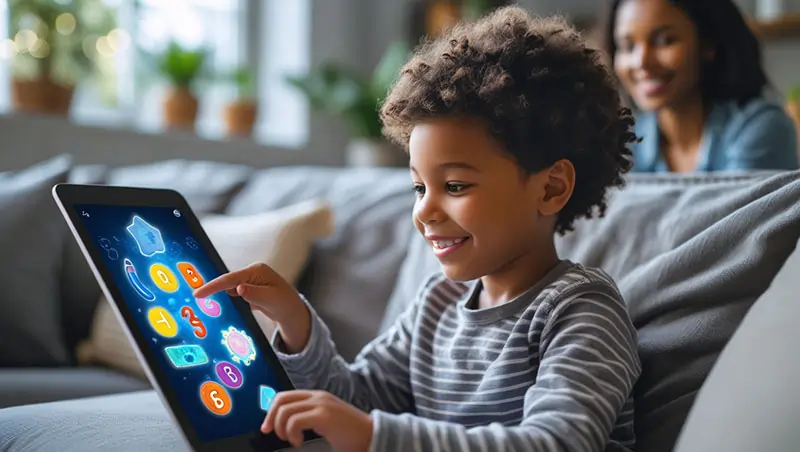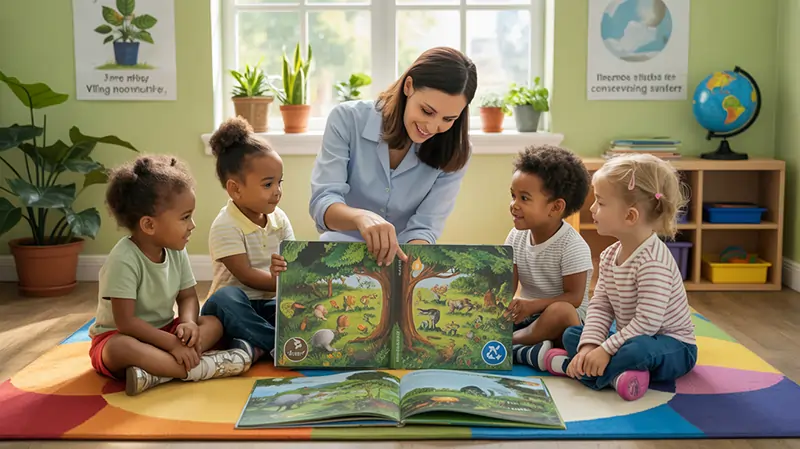Your Must-Read Guide for Turning Tech Time into Learning Opportunities
Many parents think that screens are both good and bad. They are convenient, connect people, and provide endless entertainment. But too much screen time (or the wrong kind) can make you worry about your child’s attention span, social skills, or health.
But here’s the good news: not all time spent in front of a screen is wasted. With the right tools and approach, technology can actually help your child learn a lot.
This guide gives parents useful tips on how to turn everyday tech use into opportunities for learning, growth, and inspiration.
Start by Understanding the Difference Between Passive and Active Use
The first thing you need to do is change how you think about screen time. Some digital experiences are better than others:
- Watching fast-paced videos or playing games that repeat themselves is an example of passive screen time.
- Interactive learning apps, problem-solving games, creative design platforms, or video chatting with loved ones are all examples of active screen time.
Active use helps your child think, make choices, and interact with the material, all of which are important for their growth.
You might find youself wondering: should parents limit screen time for kids? If this sounds like something you’ve heard before, it’s important to learn more about it based on research and to remember that the answer depends on what the screen is being used for.
Choose Educational Apps and Games That Match Their Age and Interests
There are a lot of great learning apps out there that can teach kids a lot of things, like reading, math, science, and coding. The most important thing is to find an app that fits your child’s age, interests, and way of learning.
Look for apps that:
- Help you solve problems, like puzzles or strategy games.
- Help people be creative (like making music, drawing, or telling stories)
- Help kids learn the basics, like phonics, number sense, and how to control their emotions.
Read reviews, try them out for yourself first, and choose content that is clearly educational over content that is just flashy.
Use Co-Viewing as a Learning Moment
Watching educational shows or playing games together turns screen time into shared learning time.
Ask questions like:
- “What do you think will happen next?”
- “How would you get around that problem?”
- “What did you take away from this?”
This not only keeps your child interested, but it also helps them think more deeply, remember things, and talk to others.
Encourage Tech-Driven Creativity
Screens aren’t just for watching; they can also be used to make things. Get your child to use devices to:
- Make their own short documentary
- Make a comic strip or digital art
- Record music or tell a story with voiceovers and pictures
You help your child build confidence and express themselves in meaningful ways by turning them from a consumer into a creator.
Bonus Tip: If you’re working with scripts or video segments—for example, creating educational shorts or narrations—tools like Zelios’ Script Timer can help you measure runtime and pacing with precision.
Balance Screen Time with Screen-Free Reflection
Don’t just move on after your child finishes an educational game or app. Take a moment to pause and think. Ask:
- “What did you like best about that activity?”
- “What was the most interesting thing you learned?”
- “How could you do that in real life?”
This change helps your child connect what they learn online with what they learn in real life, which makes it easier for them to use what they learn.
Use Technology to Explore the Real World
Make screen time a way to get outside and have fun. Watch a wildlife documentary and then go for a walk in the woods. Use a stargazing app, then step outside to look at constellations. Watch a cooking video, then follow along with the recipe.
Screens don’t have to keep your child inside; they can make them curious about the world around them, help them learn, and let them play.
Closing Remarks
It’s fine that technology isn’t going anywhere. Instead of seeing it as a bad thing, see it as a useful tool for parenting.
Screen time can help your child grow in ways that are both fun and educational if you use it on purpose. Every swipe and click can have a meaningful effect if you use the right apps, share experiences, and think about what you’ve done.
So yes, be careful about how much time you spend in front of a screen, but more importantly, make sure that time is well spent.


